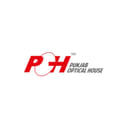Cleft Palate - How Efficient Is Speech Therapy?
Speech therapy helps in improving the speech, understanding the language skills, and also help in communicating in non-verbal ways such as listening and taking turns. Speech therapy treats various kinds of communication and swallowing problems.
Children with Cleft Palate are diagnosed with an opening in the upper tissue palate in the mouth. This condition causes Velopharyngeal dysfunction (VPD) which results in excessive airflow from the nose while speaking. Although it can be corrected with surgery, the patient will still be affected by VPD.
Speech therapists help in this condition by assisting the patient with speech and language skills. The speech therapy for such a patient can be categorized as auditory feedback and articulation practice.
Auditory Feedback
Before involving the patient with any speech therapy, it is essential for the patient to understand the difference between normal voice and nasal voice output.
For this purpose, the child is instructed to use a tube to listen to the voice of the normal person. To understand the difference, one end of the tube is then held near the ear of the child and the other is held near his nasal and then he is instructed to make sounds so that he understands the nasal voice.
After this understanding, the different approaches to speech therapy starts.
Articulation Practice
This is usually where speech therapy begins. In this practice, the different type of condition is understood that relates to different speech organs. The understanding of different vowels, consonants and related sounds is taught to the child for making the speaking sound less nasal.
Some of the methods for achieving these sounds are:
-
Pharyngeal Plosives: This sound is produced when the tongue is moving backward. The practice of making “ng” sound, and dropping the tongue and producing “k” sound.
-
Pharyngeal fricatives: When the tongue retracts but is not able to make contact with the pharyngeal wall is when this sound is produced. The speech therapists make the child learn the techniques of making sounds of “t”, “ts”, “ch”, or “sh”, and provide feedback for learning the proper positioning of the tongue.
-
Nasal Plosives: This sound usually occurs when the tongue is positioned improperly and it obstructs the vocal tract. A speech therapist may make the child yawn so that the back of the tongue is pushed down, and feel as the mouth stretches.
-
Palatal-Dorsal Productions: It occurs due to the malocclusion of the teeth. Practicing sounds like “t”, “d”, “n”, “k”, “g”, and “ng” often helps in such condition.
Take Away
Cleft Palate is generally developed due to improper growth while the child was in the womb. The difficulty of producing proper sounds when there is excessive airflow in the mouth can be overcome by training and practicing certain sounds, as instructed by a speech therapist.



+1.svg)
